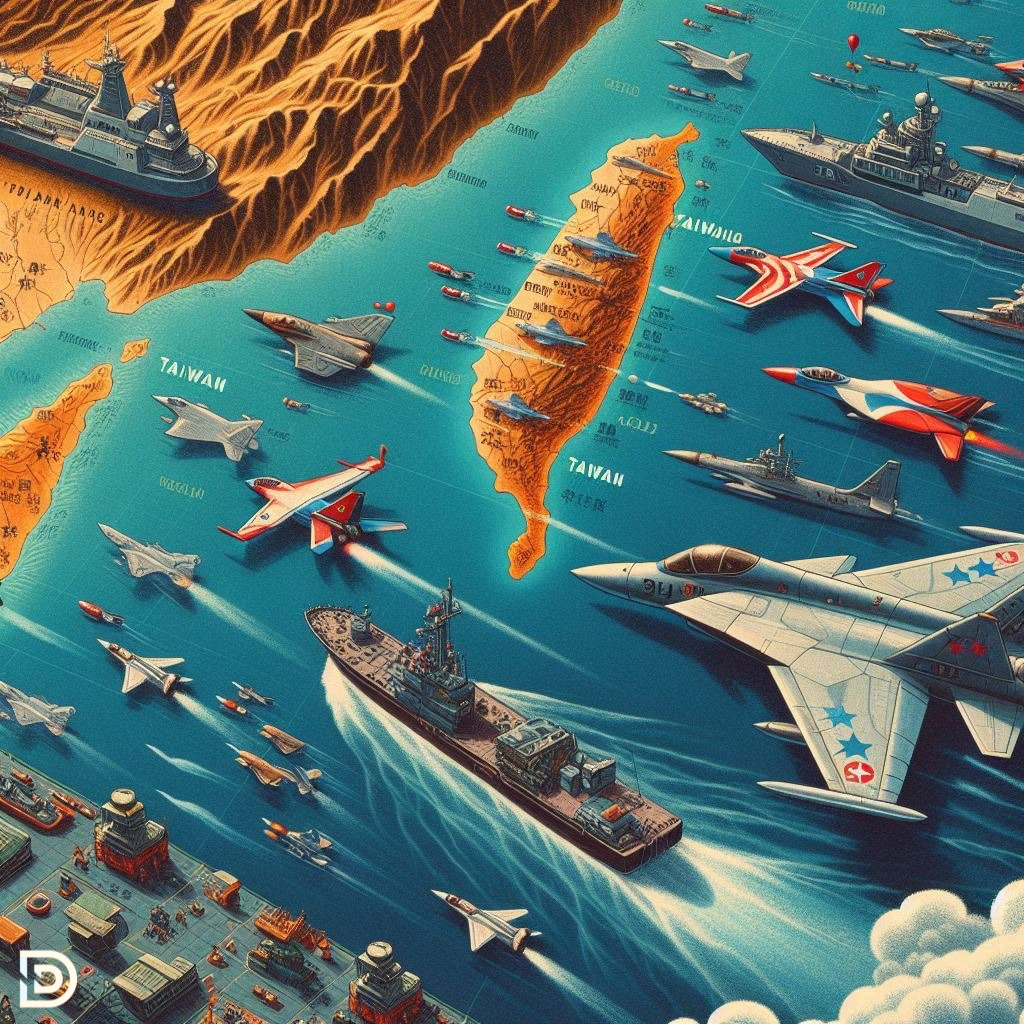China’s military activity surrounding the island has increased, according to reports from Taiwan Ministry of National Defense (MND). This increased presence includes both air and naval operations. Here’s a summary of the recent events.
Recent Military Movements
From 6 am Thursday to 6 am Friday, Taiwan noticed 17 Chinese military planes and 11 ships close to the island. Fourteen of these planes crossed the median line of the Taiwan Strait and entered Taiwan’s southwestern Air Defence Identification Zone (ADIZ). Taiwan’s military responded by sending out its own planes and ships and used missile systems to keep track of the situation.
Earlier in the week, from 6 am Tuesday to 6 am Wednesday, Taiwan spotted 29 Chinese military planes and 10 ships near the island. Thirteen of these planes crossed the median line and entered Taiwan’s northern, central, southwestern, and eastern ADIZ. Taiwan again sent its planes and ships and used missile systems to monitor the activity.
The MND stated, “17 PLA aircraft and 11 PLAN vessels operating around Taiwan were detected up until 6 a.m. (UTC+8) today. 14 of the aircraft crossed the median line and entered Taiwan’s southwestern ADIZ. We have monitored the situation and responded accordingly.”
And for the earlier activity, the MND said, “29 PLA aircraft and 10 PLAN vessels operating around Taiwan were detected up until 6 a.m. (UTC+8) today. 13 of the aircraft crossed the median line and entered Taiwan’s southwestern and southeastern ADIZ. We have monitored the situation and responded accordingly.”
Increasing Tensions
This recent spike in military activity is part of a larger pattern of Chinese provocations. China has been increasing its military maneuvers around Taiwan, including frequent air and naval incursions into Taiwan’s ADIZ and military exercises near the island. These actions have raised concerns about regional stability and security.
Taiwan’s Response
In response to these activities, Taiwan has taken several measures to ensure its security. The island’s military regularly monitors the situation and deploys its forces to deter and respond to any incursions. The use of coastal-based missile systems is a key part of Taiwan’s strategy to protect its airspace and territorial waters.
Political Reactions
On July 30, Taiwan President Lai Ching-te accused China of misinterpreting a United Nations resolution to justify its military actions against Taiwan. According to Lai, China is wrongly using UN Resolution 2758 to support its “One China” principle, which claims Taiwan as part of China. Lai argued that this interpretation not only creates a legal pretext for China’s military aggression but also hinders Taiwan’s efforts to join international organizations.
President Lai addressed the issue during the annual summit of the Inter-Parliamentary Alliance on China (IPAC) in Taipei. He criticised China for its inaccurate reading of the UN resolution and its attempts to block Taiwan’s participation in global forums.
The Taiwan Strait Issue
The Taiwan Strait is a significant and contentious area. It separates Taiwan from mainland China and has been a flashpoint for military tensions. Beijing considers Taiwan a part of China and insists on eventual reunification, even by force if necessary. This ongoing tension continues to fuel regional instability and impacts international relations.
The recent increase in Chinese military activity near Taiwan highlights the growing tensions in the region. Taiwan’s response and the ongoing political dispute over interpretations of international resolutions underscore the complex and sensitive nature of cross-strait relations. As the situation evolves, continued monitoring and diplomatic efforts will be crucial in managing the stability of the region.

